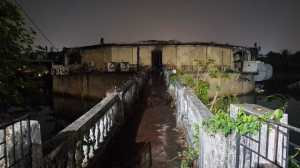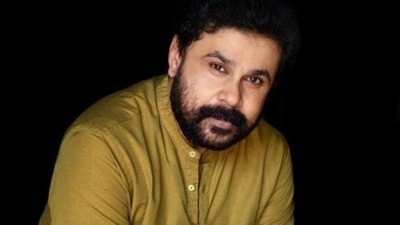Stay updated with the latest - Click here to follow us on Instagram
Water reforms panel: ‘Govt plan to interlink rivers has problems’
The seven-member committee on water reforms, headed by Mihir Shah, former member of the erstwhile Planning Commission, has pointed to “major problems”, including costs.
 Water Resources Minister Uma Bharti (file photo)
Water Resources Minister Uma Bharti (file photo)
Even as Water Resources Minister Uma Bharti is pushing for interlinking of rivers, a committee appointed by her ministry has questioned the scheme.
The seven-member committee on water reforms, headed by Mihir Shah, former member of the erstwhile Planning Commission, has pointed to “major problems”, including costs.
“The comprehensive proposal to link Himalayan rivers with Peninsular rivers for inter-basin transfer of water was estimated to cost around Rs 5,60,000 crore in 2001. Land submergence and R&R (relief and rehabilitation) packages would be additional to this cost. There are no firm estimates available for running costs of the scheme, such as the cost of power required to lift water,” the committee said in its report, submitted to the ministry recently.
Stating that rivers in India have excess water around monsoon, it said transfer from a ‘surplus’ basin to a ‘deficient’ basin is not a very effective idea.
“There is also the problem that because of our dependence on the monsoon, the periods when rivers have ‘surplus’ water are generally synchronous across the subcontinent. A major problem in planning inter-basin transfers is how to take into account the reasonable needs of the basin states which will grow over time. Further, given the topography of India and the way links are envisaged, they might totally bypass the core dryland areas of central and western India, which are located on elevations of 300+ metres above MSL (mean sea-level),” it said.
As reported by The Indian Express, a study by IIT Madras and IIT Bombay had also raised doubts over the rationale for river interlinking. The study had presented evidence to show that rainfall in ‘surplus’ basins was declining, while it was increasing in ‘deficient’ basins. It said mean rainfall across the country was getting more uniform, thus negating the need for transferring water from one river basin to another.
Interlinking of rivers was a concept that originated in the 1980s and a separate organisation, the National Water Development Agency, was created to carry out feasibility studies. At present, 30 inter-basin transfer links are proposed, involving rivers across the country. The first of these projects to be taken up for implementation — the Ken-Betwa link in Madhya Pradesh — has been approved by the Cabinet and is awaiting environmental clearance, amid protests by water activists and civil society organisations.
The committee report pointed out: “It is also feared that linking rivers could affect natural supply of nutrients through curtailing flooding of downstream areas. Along the east coast of India, all major peninsular rivers have extensive deltas. Damming the rivers for linking will cut down sediment supply and cause coastal and delta erosion, destroying the fragile coastal ecosystems.”







